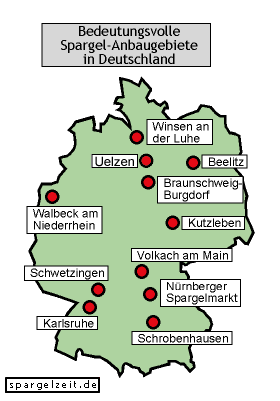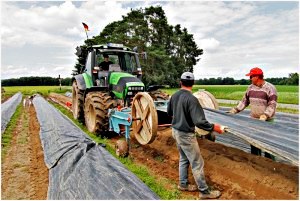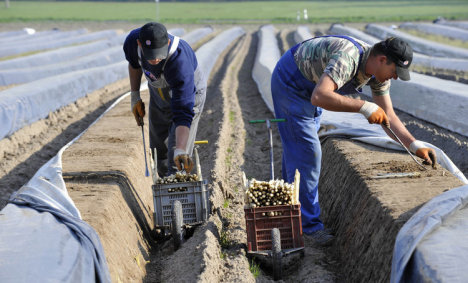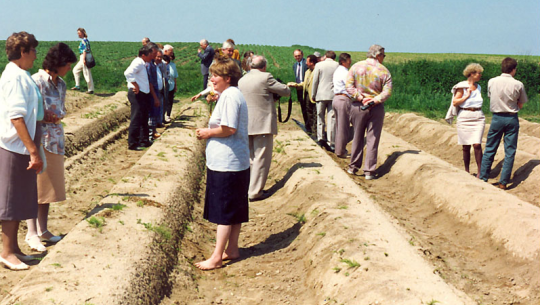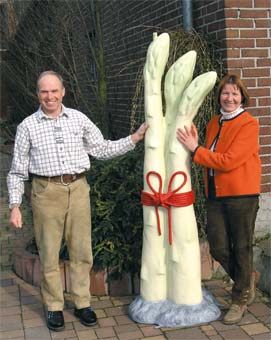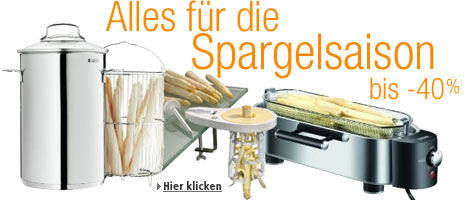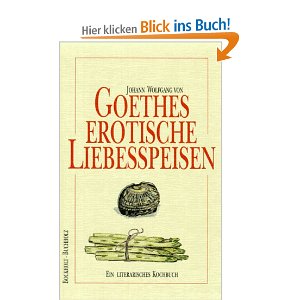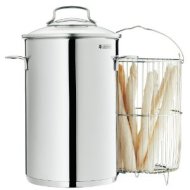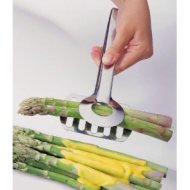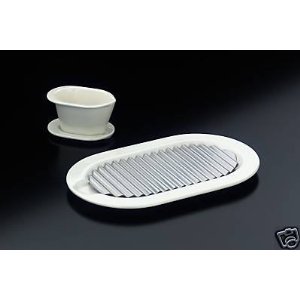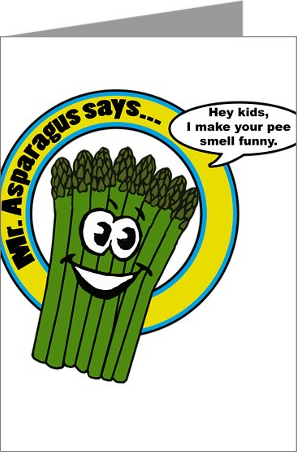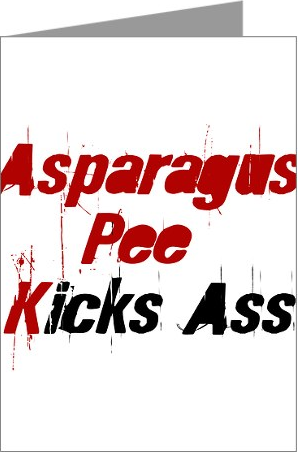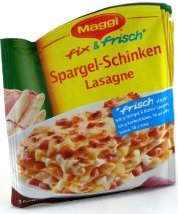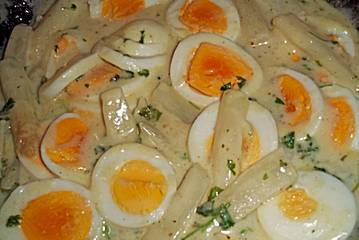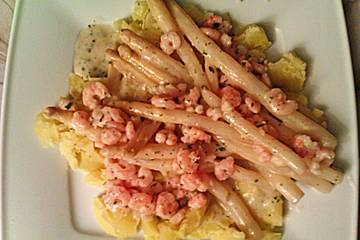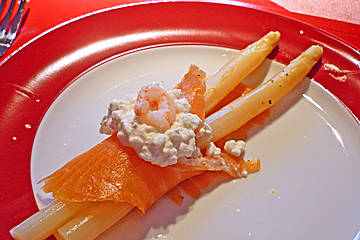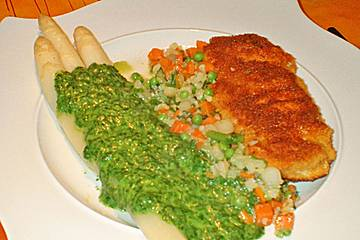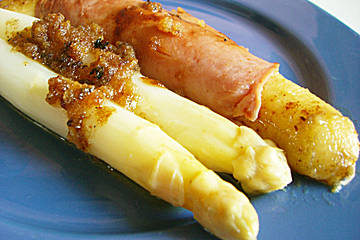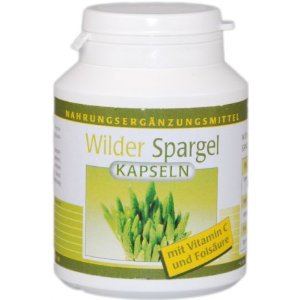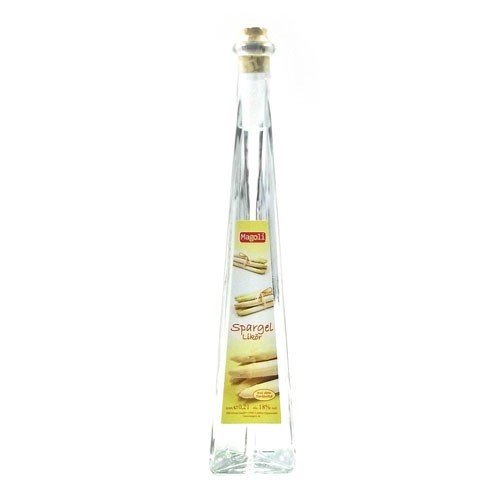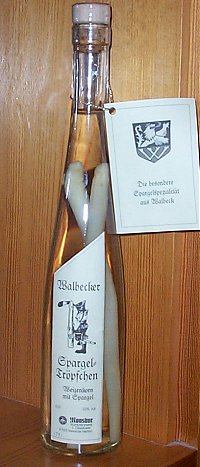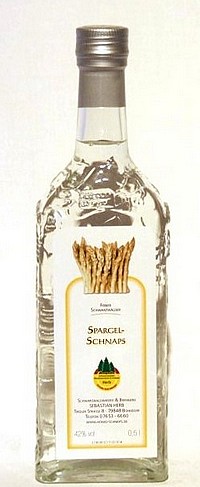In Germany, it is now Spargelzeit -- asparagus season. "Discovering" the almost emotional German relationship with this flowering perennial is one of the standard rites-of-passage for a foreigner living here (and re-lived to some degree each Spring). There are many blogs & web sites about spargel, but we'll try to take a fresh look here at Schnitzelbahn, including 5-course asparagus meals, asparagus liquor... and a song about asparagus.
But first, here is the Spargelkönigin 2010/2011! ("Asparagus Queen")
This title has been awarded every year since 1975 in a small town called Schrobenhausen, the self-proclaimed largest and most well-known location in Bavarian "Spargelland" (asparagus country). They have over 600 independent farms, plus a daily asparagus market (in season) in front of the Rathaus -- very much like a Christmas market. They are also home to the Asparagus Museum (quite a collection, 2000 years going from Pompeii to today)!
According to the website, winner "Monika I" won not only due to her beauty, but to her knowledge of asparagus. Not to be confused, of course, with the asparagus queens in Nienburg, Füchtorf, Abensberg, Nettetal, or Beelitz.
Monika came to Munich on the 15th of April 2011. She marched past the Rathaus to the Viktualienmarkt and ceremonially unearthed the first asparagus to kick off Spargelzeit in Munich.
Let's get started:
1) Germans grow and eat a lot of asparagus. (obviously)
Per capita, Germans use 1.4kg (3.1lbs) of fresh asparagus each year. Most is consumed directly, but some is frozen or canned for eating later in the year. This amount is more than twice the U.S. per capita usage, about 1.5 pounds in 2009 (and that was highest since 1962!).
As with their automobiles, Germans are obsessive about perceived quality and prefer home-grown produce. 78% of the asparagus market is farmed in Germany, vs. the U.S. where up to 85% is imported. Because of the desire for local sources, 14% of all cultivable land in Germany is used for asparagus, the largest percentage of any vegetable in the country. In addition, almost half of this asparagus is purchased at farmer's markets and local stalls rather than supermarkets -- there's an asparagus stall on almost every corner of Marienplatz right now.
Asparagus plants flowering in Summer: Protecting the asparagus for Winter: 

Asparagus is grown all over Germany, with the highest output coming from the northwest states of Niedersachsen and Nordrhein-Westfalen. Likewise, the most well-known locales for festivals and asparagus markets are spread out too -- Schrobenhausen and Nürnberg are the focal points in Bavaria:
Production of asparagus in Germany, by state Significant asparagus locations in Germany
Germany exports very little asparagus. In effect, their production is simply not enough to meet local demand! The contrast with the U.S. is getting stronger -- Germany is continuing to use more hectares for asparagus (doubled since 1995: 9,100 to 18,400), whereas the U.S. is using fewer hectares (halved since 1995: 29,200 to 13,000).
Planting and covering the (white) asparagus Harvesting the (white) asparagus
A final statistical perspective (from 2008):
Area Harvested Production Productivity
(hectares) (metric tons) (metric tons/hectare)
China 1,265,865 6,352,667 5.0
Peru 23,547 284,103 12.1
Germany 18,436 92,653 5.0
United States 13,030 43,180 3.3
Unfortunately I found conflicting statistics on the Internet (some have the U.S. with twice the hectares and production as above), but in every case Germany is in the Top 4 global producers, just behind or ahead of the U.S.. China is by far the top producer, but Peru is the productivity and export king (they grow a lot and could not consume all they grow).
2) Asparagus in Germany usually means the white variety.
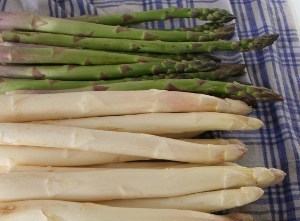 "White asparagus is cultivated by denying the plants light while they are being grown" (Wikipedia). Lack of photosynthesis supposedly keeps the stalks a little sweeter and more tender. Almost 80% of German production is white asparagus. This is in stark contrast with the U.S. which has "minimal production" and consumption outside the green variety.
"White asparagus is cultivated by denying the plants light while they are being grown" (Wikipedia). Lack of photosynthesis supposedly keeps the stalks a little sweeter and more tender. Almost 80% of German production is white asparagus. This is in stark contrast with the U.S. which has "minimal production" and consumption outside the green variety.
To deny the plants light, asparagus are grown covered in soil, a practice called "hilling". Sandy soil is supposed to be ideal, as found in Schrobenhausen. You can take Spargel Tours to learn hands-on too:
At the cash register, Germans pay up to 30% more for asparagus by weight than a typical shopper in the U.S.. My local store has 1kg for 6.99 euros (about $4.50 per pound) where my hometown Wegmans has 1lb for $3.49.
Some of this difference is due to the relatively cheap asparagus from Peru and Mexico that the U.S. imports, but ultimately we're not comparing apples-to-apples. White asparagus costs more to produce (hilling and covering / uncovering processes). Also, much of the asparagus here is organic due to strong German preference. This results in higher growing costs plus a price premium for perceived health benefits. An additional consideration is that white asparagus should be peeled before cooking, effectively increasing the net price per pound after purchase.
3) Asparagus is more than just food - you can accessorize!
Any major food source will be reflected in the culture. Amazon.de has a "Spargelsaison" with an amazing array of asparagus-themed items. Forget the vegetable peeler and go with a suction-sup or c-clamp mounted gizmo:
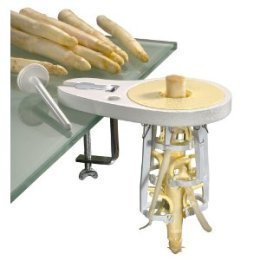 If you're even more lazy, or just like cool contraptions, my local grocery store will use the industrial machine below to peel your asparagus for an extra 1 euro per kilo. The manufacturer's web site claims 100 stalks per minute... if it's fed fast enough. In any case, here's my handheld video of this power tool at work:
If you're even more lazy, or just like cool contraptions, my local grocery store will use the industrial machine below to peel your asparagus for an extra 1 euro per kilo. The manufacturer's web site claims 100 stalks per minute... if it's fed fast enough. In any case, here's my handheld video of this power tool at work:
Not sure how to prepare the peeled stalks? Go for one of the 100+ asparagus cookbooks (I stopped counting), or be adventurous with an erotic cookbook (and, ideally, appropriate artistic ambiance from the Asparagus Museum):
Once you're ready to start cooking, you need to bring out the asparagus steamer, asparagus tongs, and serve them on an asparagus plate with matching dish for asparagus sauce:
There are hundreds of other novelties available: deck yourself out in hat, t-shirt, tie, and shoes... "zombie asparagus" pin, necklace, and t-shirt for your dog too... coffee cup (of course), water pitcher, and I recommend reading Schnitzelbahn using the asparagus mouse pad:
There is one especially interesting category of curio -- things referring to the chemical effect asparagus has on the eater's urine. Wikipedia states: scientific studies have shown that "producing odorous uring from asparagus [is] a universal human condition" but fortunately only 22% of people have the genes to smell the specific asparagus-created odour. Ironic that the "German" (web site here) t-shirt, pin, and greeting cards are in English:
4) Love of asparagus leads to wild culinary results
The range and adventurousness of German spargel cooking is astounding. On a popular website there are over 2400 posted recipes. Commercially, you see packaged items like the "asparagus-ham lasagne" mix, or dine out and indulge in a 5-course asparagus meal at top restaurants (yes, every course has asparagus, even the dessert UPDATE: page removed by the Bayerischer Hof!):
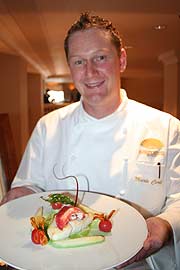 Mark's in the Munich Mandarin Oriental (from 2007):
Mark's in the Munich Mandarin Oriental (from 2007):
- Salad of asparagus and crab
- Wild garlic veloute with scallops (and asparagus)
- Turbot on asparagus-pea ragout
- Veal with asparagus and morel
- Roasted asparagus with vanilla foam (dessert)
Each course is served with a matching wine,
Price was 135 euros per person (and it was booked out).
Speaking of wine... this is the one food where beer is not the preferred accompaniment. German Silvaner (white) is the most common type served with asparagus, and a decent bottle can cost just 4 euros.
Some of the online recipes can go well beyound my American tastes, such as (see below): asparagus and egg ragout, asparagus with baby shrimp ("krabben"), asparagus with salmon and cream cheese ("frischkäse"), asparagus with creamed spinach sauce, and asparagus with butter bananas...
I can understand that the market has also developed "wild asparagus pills" and "slim spargel capsules" because many healthy vegetables are evolved into such products... but asparagus liquor (middle, below) and schnapps (with stalks in the bottle)?
5) The asparagus craze is another [good] excuse to have a festival and enjoy life
There is no official starting point to "Spargelzeit"; different regions/towns kick it off throughout March and April. Asparagus time does end formally on "Johannistag" -- June 24, just a few days after the Summer Solstice.
Like seasonal points for beer (e.g., Maibock, Oktoberfest) it's a great reason to have a local street fair or festival, grill some meat, and listen to music with cool drinks... sometimes followed by fireworks in the evening. In Effeld, they have (see below) street vendors, rides for the kids, and a stage with asparagus-green dancers & music acts (the photo in the lower right says "Effeld Spargelfest - here the asparagus rocked")
Here is a 2:40 news reel of the Spargelfest in Hügelsheim that shows the opening parade, their Spargelkönigin, workers harvesting the asparagus, and lots of beer being consumed:
Another amateur blogger / web meisterin captured the domain www.spargelzeit.de and her banner graphic says volumes about the national feelings toward asparagus season (Google translated version here):
In other media, there are 4 MP3s on Amazon.de (one cooking tips, two weight loss, and one schlager song). In addition, one of the longest-running and most popular detective series on German TV called "Tatort" (it means "scene of the crime") had an episode called "Spargelzeit" where the heros had to solve the stabbing murder of the Spargel King's wife!
But I promised a song about asparagus... and will deliver two! First is an old-fashioned television program with a song called "Veronika, the asparagus is growing". Is that a metaphor for something else...?
And lastly, from 2009, is a singer/songwriter at Munich's Viktualienmarkt ceremony to open Spargelzeit. He plays guitar and proclaims "Ich bin ein Spargelesser" (I am an asparagus eater). His part starts after the Spargel-Queen peforms the traditional first unearthing, at about the 1:30 mark in the video. This fun is why you don't want to miss Spargelzeit in Germany!
Happy Spargelzeit to all.

